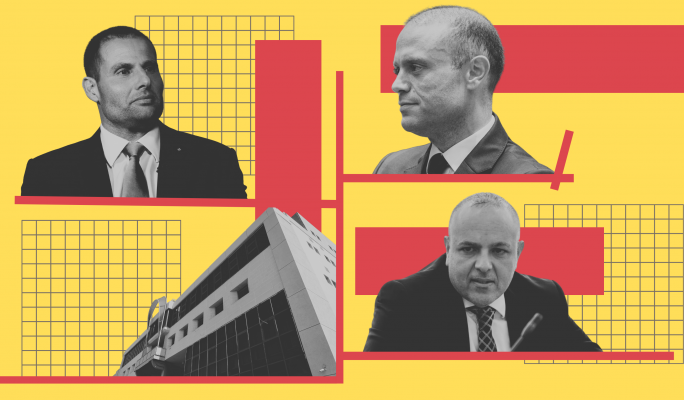Copyright forbes

Bank of America building in Los Angeles Bank of America is the second largest U.S. bank by assets, with roughly $2.6 trillion on its balance sheet and $192 billion in 2024 revenue. As chief technology and information officer, Hari Gopalkrishnan leads the organization responsible for designing and delivering technology across eight lines of business, from consumer banking to capital markets. His global team supports more than 59 million digital users and has helped drive more than 7,800 patent filings. Gopalkrishnan’s responsibilities span everything from cybersecurity and infrastructure to data, analytics and workforce enablement. He views his role as connecting technology directly to business outcomes. “Our job is to make our clients’ financial lives better with every single transaction,” he noted. “That means anticipating what they need before they ask and making it easy for them to act when they do.” Starting with People, Not Tools At Bank of America, technology starts with empathy, not engineering. Gopalkrishnan insists his team never begins with a new tool and works backward to find a use case. “We never start with the shiny technology in our hand,” he emphasized. “We start with the explicit or implicit customer need.” Every two weeks, the bank surveys customers, monitors call center feedback and studies behavioral data to see where people struggle. When customers call to perform tasks already available in the app, that becomes a design signal to simplify the experience. That same listening extends to employees. Technologists shadow call center associates to document every click and friction point, and those sessions often spark automation ideas. “You can only fix what you’ve felt yourself,” he explained. “When you sit next to an associate and see how hard it is to complete a simple task, you realize exactly where to help.” For him, technology’s purpose is not novelty but relief, reducing toil for employees and effort for customers. Erica and the Power of Natural Language Bank of America’s AI journey began long before the current wave of large language models. Early analytics supported fraud detection and document processing, but in 2017 the team launched Erica, the virtual assistant now used by tens of millions of customers. The idea emerged from a simple observation: customers loved the app but couldn’t easily find features on a small screen. “It’s hard to fit a hundred features on a five-inch phone,” Gopalkrishnan said. “So, we thought, what if people could just ask for what they wanted?” MORE FOR YOU Bank of America's Chief Technology and Information Officer Hari Gopalkrishnan Bank of America Erica made banking conversational. Customers can type or speak requests like “order a checkbook” or “make an appointment,” and the system handles the rest. Over time, Erica began to deliver proactive insights, such as alerting a user that their gym had charged them multiple times. “That moment when you realize someone is watching out for you is powerful,” he highlighted. “It transforms banking from transactional to personal.” Since Erica’s debut, digital satisfaction scores have climbed from the 50s to nearly 90 percent. Building the Foundation for Scalable AI Behind Erica lies a disciplined architecture built on automation, unified data and natural language capabilities. Automation ensures that digital interactions can lead directly to action. “If I can understand what you say but can’t do anything about it, that’s useless,” Gopalkrishnan noted. Data integration provides the context to make those actions meaningful, allowing fraud detection and personalization across credit, deposit and mortgage products. The third pillar, language, was a challenge years before today’s foundation models existed. The bank had to map customer phrasing to banking intent using its own natural language models. “We had to learn linguistics and ontology,” he recalled. “That work now pays off because we can build on it with modern AI.” Together these layers created a platform capable of continuous learning, not just one-time automation. Preparing People for the AI Era As new technologies gained traction, Gopalkrishnan recognized that success depended as much on people as platforms. The bank began by educating senior executives, including CEO Brian Moynihan, about both the promise and the risks of AI. “We wanted everyone to understand the art of the possible and the reality of bias or hallucination,” he explained. “You can’t lead what you don’t understand.” That training expanded through The Academy, the bank’s internal learning platform, which now offers courses in responsible AI, prompt engineering and advanced modeling. “We’re not trying to turn everyone into data scientists,” he emphasized. “We just want them to be confident and responsible users.” That approach has helped democratize AI literacy across one of the world’s largest workforces. From Erica to Enterprise Assistants Erica’s success paved the way for new assistants like Ask Merrill and Ask Private Bank, which support financial advisors by finding answers buried in dense policy documents. “Our teammates were spending 20 minutes searching PDFs to answer client questions,” Gopalkrishnan said. “Now they can just ask, and the system curates the right response.” The concept has since expanded to more internal and client-facing workflows. These specialized bots show how AI can enhance productivity beyond customer service. “Whether you’re a banker or an analyst, the goal is the same,” he underscored. “Make information faster to find, simpler to use and more accurate to act on.” With large models improving explainability, the bank continues to extend this capability across its business lines. Choosing the Right Tool for the Right Problem Gopalkrishnan cautions against chasing complexity for its own sake. Not every task requires an agent or a probabilistic model. “If a simple rule gets you a 100 percent predictable outcome, why replace it?” he asked. “The test is always, ‘are we solving a client problem responsibly or building a shiny tool?’” That pragmatism also reduces costs, since sophisticated AI models can be computationally expensive. For him, balance is the point. Full automation works when accuracy is absolute, but some processes need a human in the loop. “Ninety percent automation with ten percent oversight is often better than chasing perfection,” he said. “It keeps you fast and safe at the same time.” Scaling AI with Discipline With a $13 billion annual technology budget, including $4 billion for new investments, Gopalkrishnan’s organization avoids indiscriminate experimentation. “In AI we chose to go slow to go fast,” he noted. “We started with a small set of pilots, built governance and learned what truly adds value.” Once frameworks were proven, teams across business lines could replicate them at scale. That discipline prevents waste and ensures each project moves the needle. “Some ideas look great in a demo but save three minutes of work a month,” he said. “We focus on what impacts revenue or expense in a real way.” The method has helped the bank accelerate safely, with measurable returns and clear accountability. Building, Buying and Partnering for Value To manage innovation complexity, Bank of America uses a three-layer model. Commodity productivity tools like writing and research are bought off-the-shelf. Persona-based tools such as coding assistants and CRM platforms are integrated under the bank’s governance framework. The top layer is where proprietary development happens, blending internal IP with workflow orchestration. “We buy where it’s smart and build where it’s strategic,” Gopalkrishnan emphasized. This hybrid approach allows flexibility while maintaining control of core data and logic. “It’s never all buy or all build,” he added. “The magic is in how you stitch them together.” That stitching, he noted, is what differentiates the bank’s technology capability from its competitors. Measuring What Matters While not every experiment demands a return-on-investment model, the more complex implementations do. “We don’t calculate ROI on someone saving three minutes writing an email,” Gopalkrishnan explained. “But when we automate a high-value workflow, it has to pay for itself.” Each initiative must demonstrate either measurable savings or revenue generation. That focus on value often prompts process redesigns before technology deployment. “If a process still runs the way it did 20 years ago, the first step is to simplify it,” he said. “Only then should you add automation or AI.” This discipline ensures modernization produces real impact rather than cosmetic change. Looking Ahead Despite AI’s prominence, Gopalkrishnan remains focused on fundamentals like automation, data integration and personalization. “There’s still so much low-hanging fruit in traditional automation,” he highlighted. “AI makes it better, but the basics still drive the biggest gains.” He also uses AI personally to enhance his own learning. “If I’m about to hear a presentation on a concept I don’t know, I’ll ask a chatbot to explain it in five bullets,” he said. “That quick context means I can engage and ask smarter questions.” For him, technology’s purpose is clear: to help people think faster, work smarter and serve customers better. Peter High is President of Metis Strategy, a business and IT advisory firm. He has written three bestselling books, including his latest Getting to Nimble. He also moderates the Technovation podcast series and speaks at conferences around the world. Follow him on Twitter @PeterAHigh. Editorial StandardsReprints & Permissions



